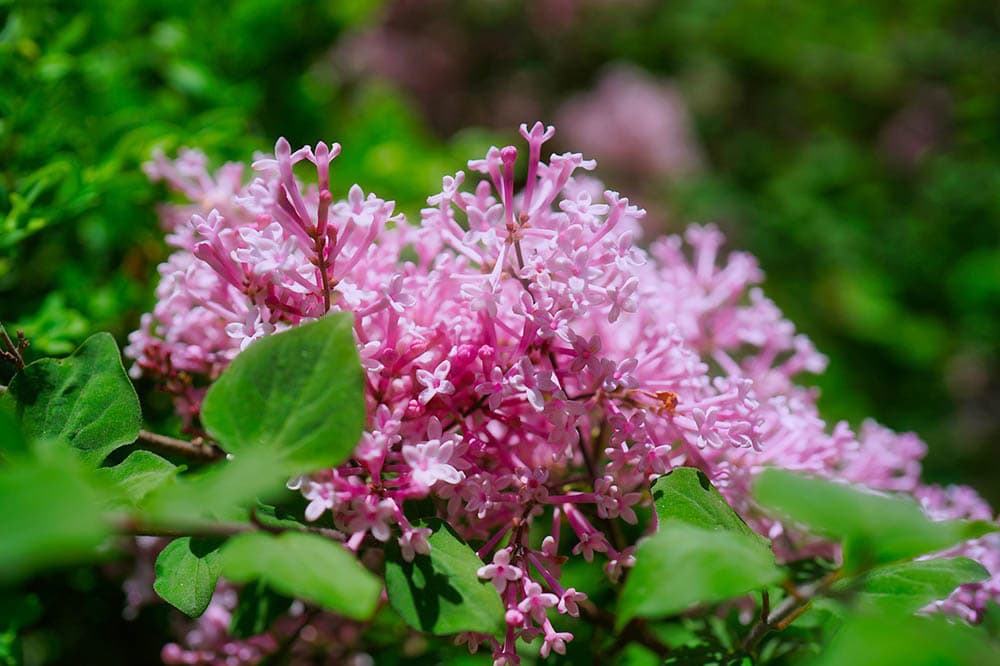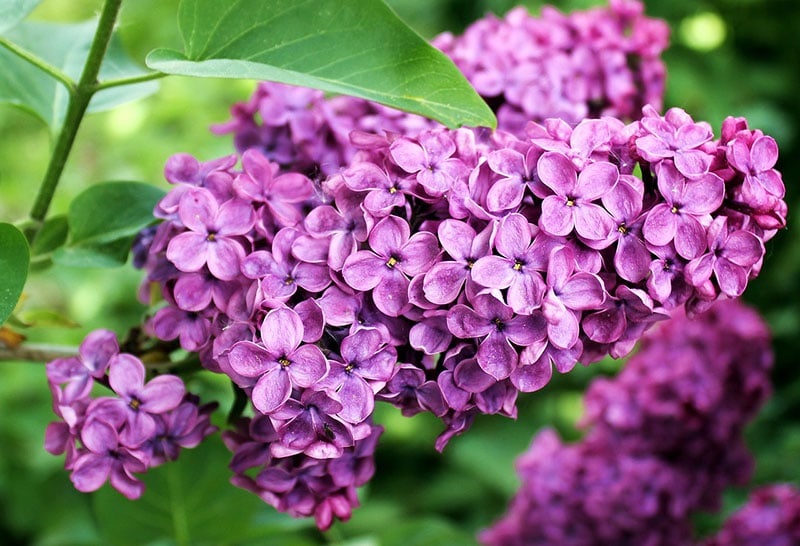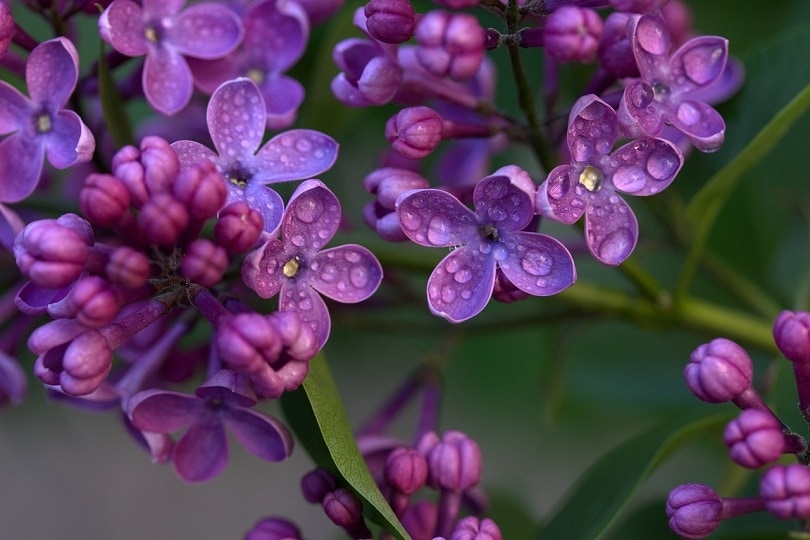Do Lilacs Like Acidic Soil? pH and Growing Guide
-
Visnja Radosavljevic
- Last updated:

Lilacs are stunning flowering bushes that produce colorful flowers. People worldwide grow lilac in their gardens because this plant is not high-maintenance and has a fantastic fragrance.
However, there are specific things you should know before growing lilac to provide your plant with the best possible conditions.
While there are a lot of factors to consider, such as the placement and sun requirements, the soil is one of the most important things for successfully growing lilacs. These plants prefer slightly acidic soil, although it can also be slightly alkaline. Still, the best soil pH for lilacs should be between 6.5–7, which is considered neutral.
Keep reading to learn more about the soil preferences of lilacs and other essential things to grow these beautiful flowers.
What Kind of Soil Do Lilacs Like?
The soil plays a crucial role in the development of your lilacs, which is why you should always consider the soil before planting this plant. Lilacs typically prefer slightly alkaline soil, although it can be neutral to slightly acidic. It’s also important for the soil to be rich in organic matter, fertile, well-draining, and somewhat moist.
Most of the time, your lilacs won’t survive if the soil is not well-draining because the water can collect around their roots.

What Soil pH is Best for Lilacs?
When it comes to the soil pH, lilacs are adaptable, although they thrive best when the pH is between 6.5–7. If the pH of the soil is too low or too high, your lilac plants could suffer from various issues and eventually die.
Most of the time, lilacs can tolerate soil up to 8.5 pH if the soil has good drainage. These plants can also tolerate if the soil pH drops slightly, although it shouldn’t be below 5.5. If your soil pH is too low for lilac plants, you’ll need to amend it and increase the pH level. Growing lilacs in poor soil will typically result in slow growth or the plant becoming unable to produce buds and flowers.
Most of the time, lilacs don’t tolerate soil amendments very well. However, if you have clay or sandy soil, adding compost and peat moss might be necessary to improve the growing conditions for your plant. You could also add lime to the soil to increase its pH levels.
How To Test Your Soil pH
The best way to determine your soil pH is to perform a soil test. The test will show the pH value of your soil, allowing you to determine if you need amendments and if your soil has enough nutrients for your plants.
Luckily, there are some excellent ways to DIY a soil test, although you can also take the soil to your local cooperative extension office to test it for you.
If you want to perform the soil test yourself, you can purchase a soil testing kit online or follow the steps below to determine if it’s alkaline, acidic, or neutral.
- Grab some soil in a container.
- Place 2 tablespoons of the soil into a bowl and add ½ cup of vinegar—if you notice the mixture fizzling, the soil is alkaline. (pH is either 7.5 or higher)
- Place 2 tablespoons of the soil into a bowl, pour some distilled water inside, and add ½ cup of baking soda—if you notice the mixture fizzling, the soil is acidic. (pH is either 6.5 or lower)
If you perform this test but there are no reactions, your soil pH is neutral, meaning it’s between 6.5–7.5.
Which Factors Affect the pH of Your Soil?
Various factors affect the pH of your soil, and the most important ones are:
- Soil texture
- Mineral contents
- Climate conditions
- Water levels

More About Lilac Plants
| Botanical Name: | Syringa vulgaris |
| Family: | Oleaceae |
| Genus: | Syringa |
| Common Name: | Lilac |
| USDA Hardiness Zone: | 3–7 |
| Plant Size: | 6–32 feet |
| Flowering Time: | Spring |
| Flower Colors: | Purple, white, cream, magenta, lavender, rose |
Lilacs are hardy, bush-tree plants that can reach a height between 6 and 32 feet. Due to their hardiness, they don’t require much care and maintenance, although you should plant them in the best possible conditions to allow them to thrive.
If you provide lilac plants with the necessary conditions for them to thrive, they can live over 100 years. Like most shrubs, it’s best to plant lilac in spring or fall, depending on your USDA hardiness zone.
Besides regular lilac care, these plants also require yearly pruning and deadheading to produce better blooms and stay in good shape.
Other Crucial Things For Successfully Growing Lilacs
Besides having suitable soil with an adequate pH, you should also consider other growing requirements of your lilacs to help them thrive.
Climate and Temperature Requirements
Lilacs grow best in colder climates, which is why they’re the perfect plan for people living in USDA hardiness zones between 3–7. Most lilac varieties need a period of winter chill to allow their buds to form and bloom in the spring.
Because lilacs are hardy, they don’t need much care to survive. Most lilacs can withstand temperatures of -60°F, meaning they’re excellent plants for all parts of the US except for the south.
Sun Requirements
Ideally, you should plant lilacs in a location that receives full sun, allowing them to get at least 6 to 8 hours of direct sunlight daily. If your lilac plant doesn’t get enough sun, it might have difficulties forming buds and therefore have difficulties blossoming.
Besides that, lilacs are not especially needy when it comes to their sun requirements, although they do like to be far away from other plants, which is something to keep in mind.
Water Requirements
Regarding their water requirements, lilacs like moist soil that’s not too soggy. That said, you should water your lilacs once or twice per week, although it’s best to always check the soil and ensure it needs watering.
The best way to do that is by performing a finger test—all you need to do is place your finger into the soil. If the top 2 inches are dry, your lilac needs watering. You could perform this test a couple of times and write down how long it takes for the soil to dry out. That way, you’ll be able to make your own watering schedule and know exactly when to water your lilacs.
You should also remember to avoid overwatering, as it could lead to several plant issues, including root rot which could kill your lilac plants.
Fertilizer Requirements
Lilacs need fertile soil to thrive, so occasional fertilizing might be beneficial. It’s best to use natural compost to fertilize your lilac, although you can also choose store-bought fertilizers.
However, if using a store-bought fertilizer, ensure it’s not high in nitrogen, as that could damage your plants. Too much nitrogen can lead to your lilac plants growing foliage without blooming.

The Best Lilac Varieties To Grow
Before growing lilac, you should decide on a variety of this plant. Although the most common is the common lilac, there are other excellent varieties, including:
- Charles Joly — This lilac variety is known for its double-flowered blooms that make it unique. The Charles Joly is typically around 10 feet high, and it blooms in mid to late spring.
- Ivory Silk — This is an extremely large lilac variety, also known as the Japanese lilac tree. It produces large, cream-colored flowers and can be over 25 feet tall.
- Bloomerang — This is a hybrid lilac variety that produces pink flowers in the spring and, starting in July, purple blossoms that last until the first frost. These lilacs are typically 6 feet tall.
- Royalty — This lilac variety produces lavender flowers during late spring and can handle USDA hardiness zones between 3–8. It grows up to 10 feet tall and is highly aromatic, which is why many people love them.
- Agincourt Beauty — This lilac variety is typically between 10–12 feet high, and it produces vibrant purple flowers from April to May.
- Beauty of Moscow — This stunning lilac variety stands out due to its soft pink/white buds. This variety is around 12 feet tall and it blooms in May.
Final Thoughts
To sum it up, lilacs can grow in slightly acidic soil, or even slightly alkaline soil, although they thrive in neutral soil with a pH between 6.5–7. If you’re unsure of the pH of your soil, it’s best to first perform a test and then determine if it’s suitable for your lilacs or if you need to amend it.
Featured Image Credit: Ludmila Kapustkina, Shutterstock
Contents
